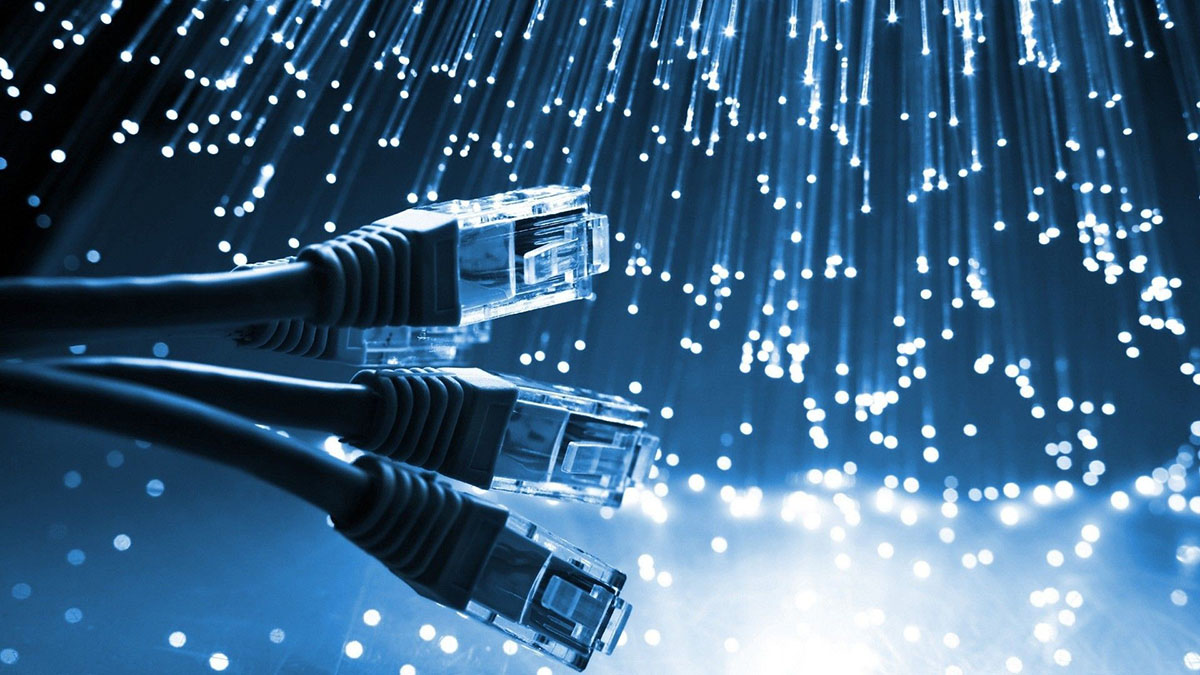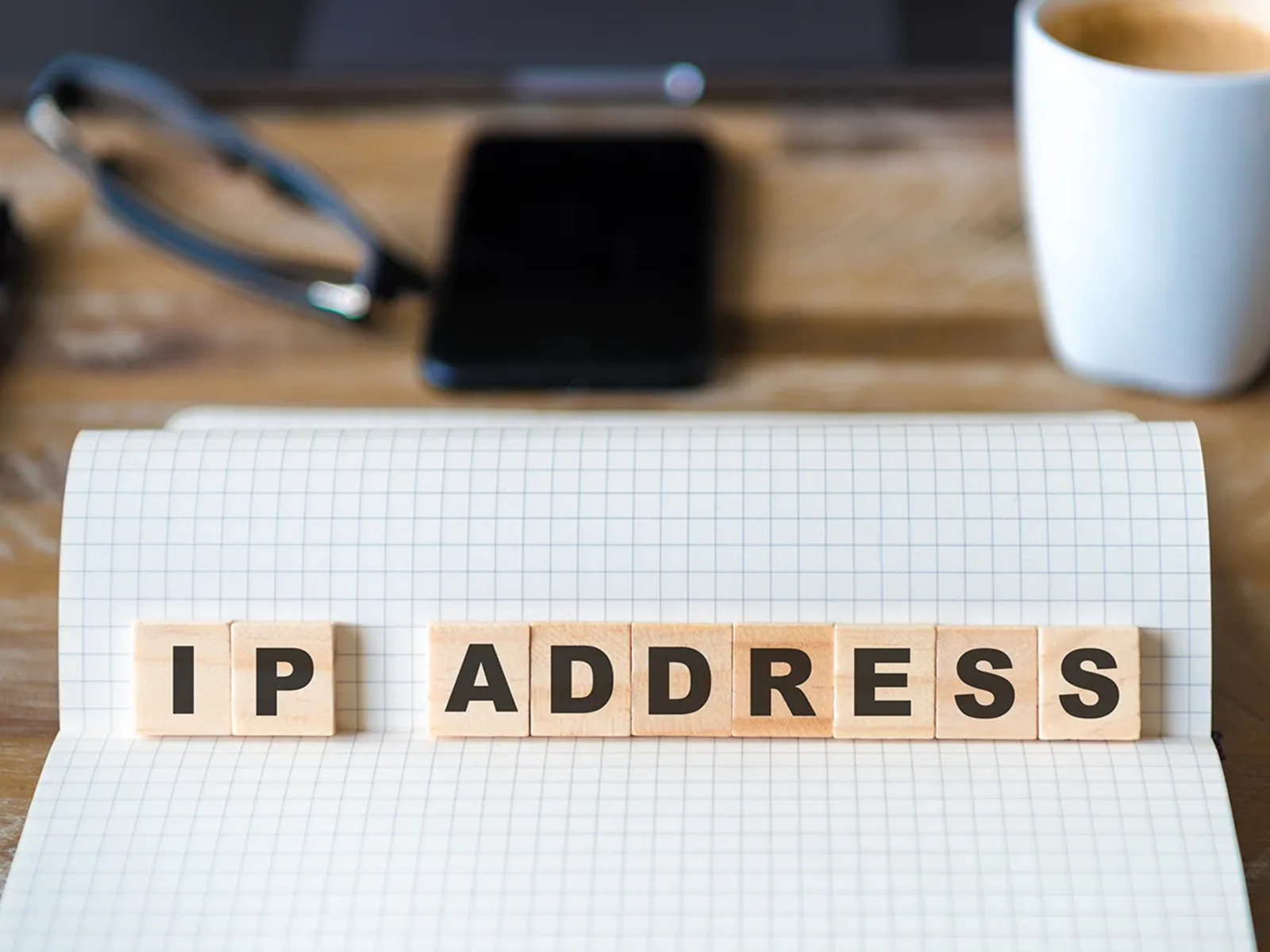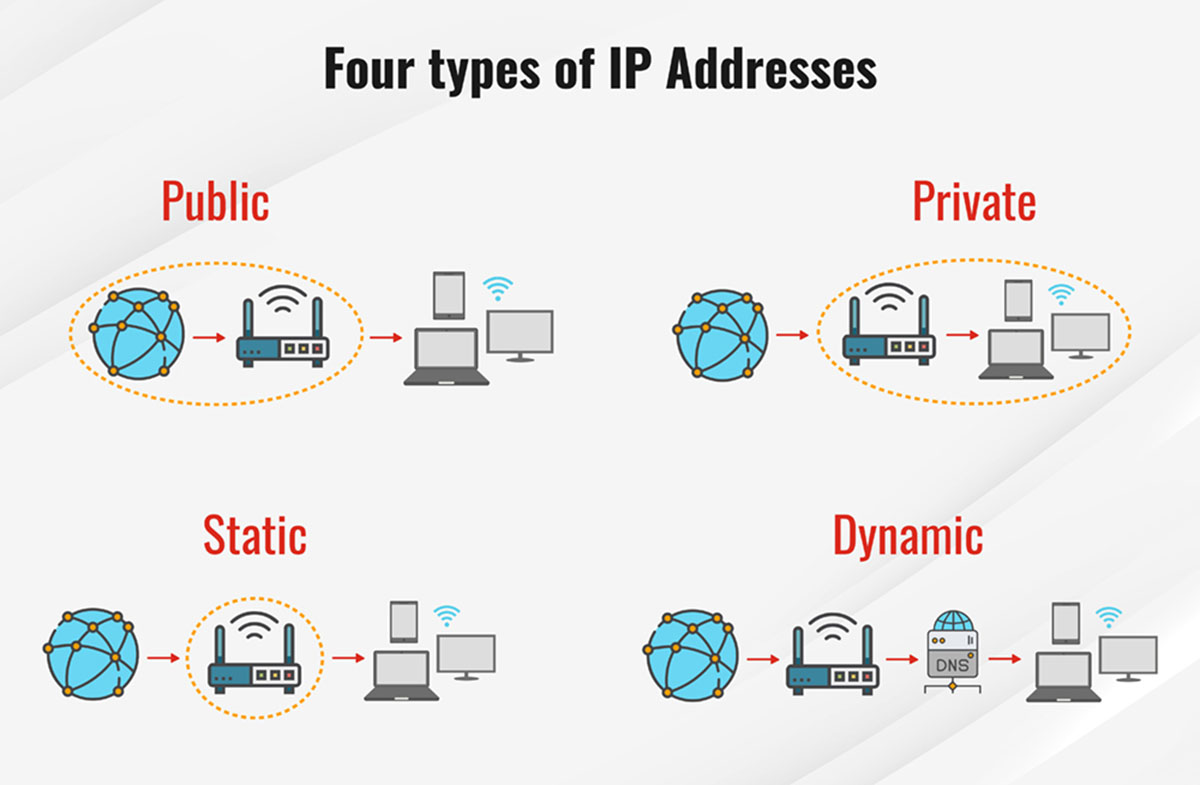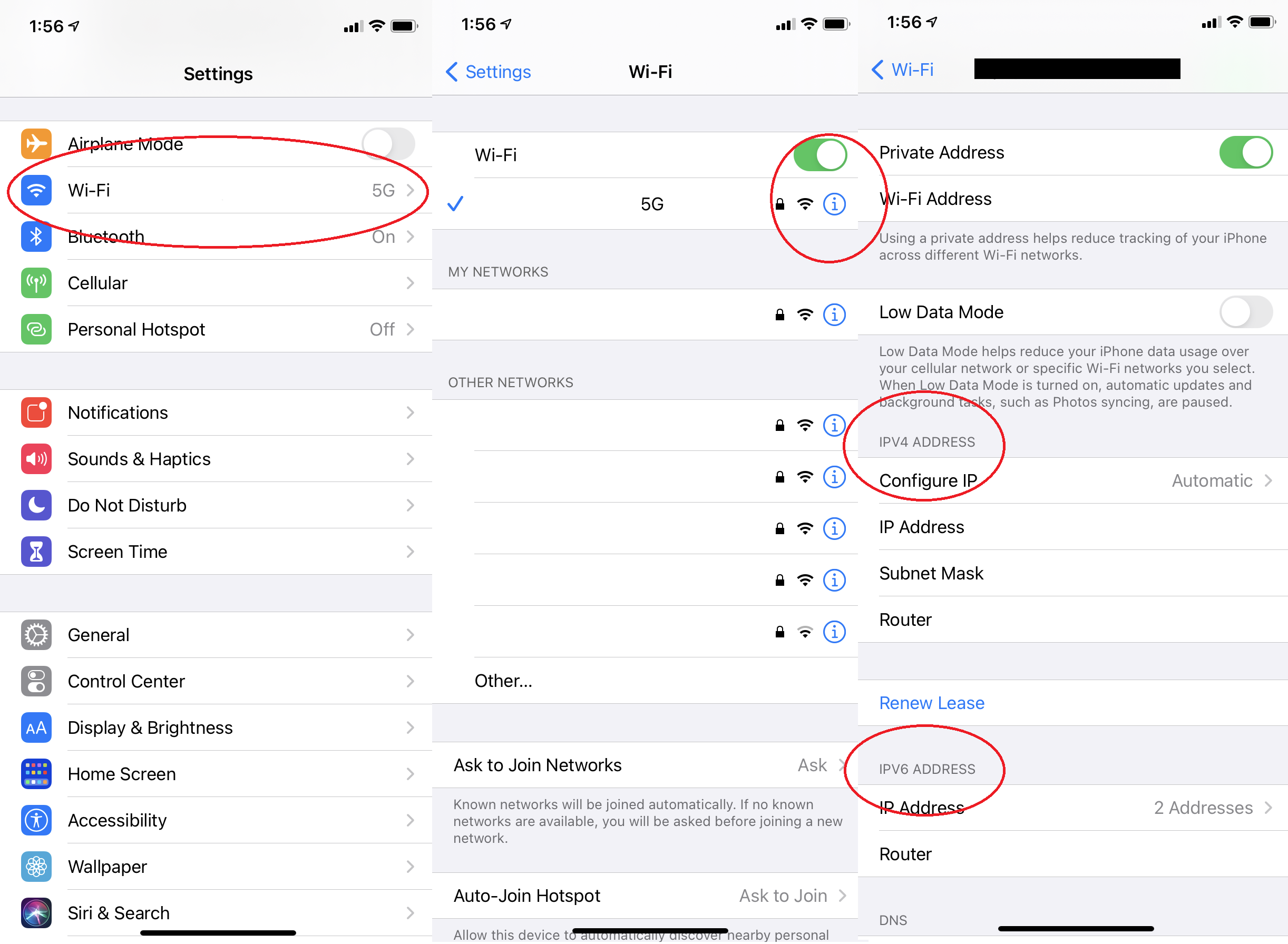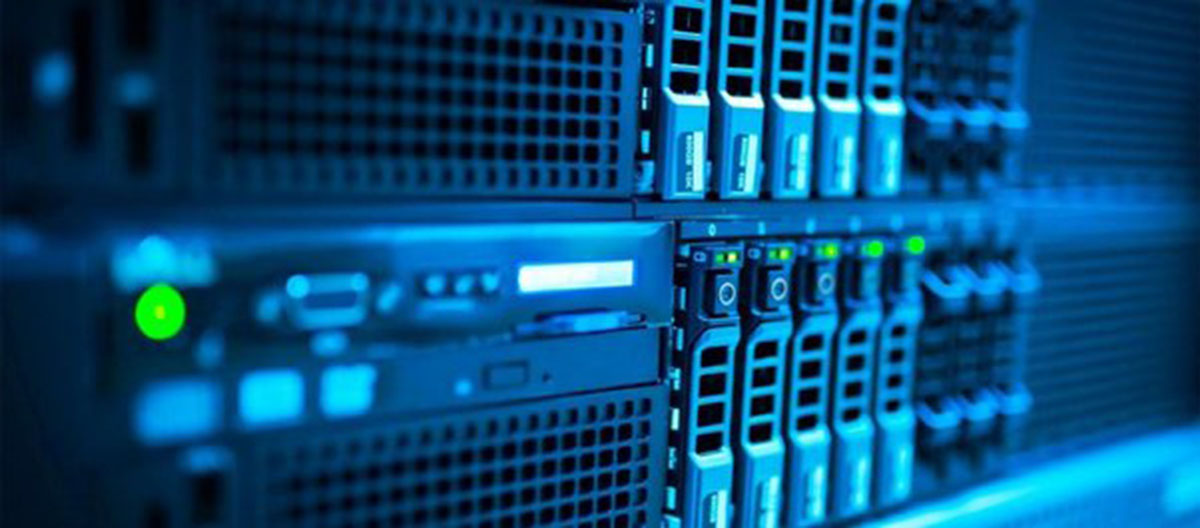Introduction
An IP address plays a crucial role in connecting devices to the internet. Whether you’re browsing the web, sending emails, or streaming videos, your device relies on an IP address to communicate with other devices and servers. But what exactly is an IP address?
An IP, or Internet Protocol, address is a unique identifier assigned to each device connected to a network. It serves as a digital address, allowing data packets to be routed to and from your device over the internet. This address acts as a virtual location, enabling devices to find and communicate with each other.
Understanding IP addresses is essential for anyone who uses the internet regularly. In this article, we will explore the different types of IP addresses, the differences between IPv4 and IPv6, how IP addresses work, and how to find and protect your IP address.
Whether you’re a tech-savvy individual or just curious about the workings of the internet, this guide will provide you with the fundamental knowledge you need to understand IP addresses and their importance in the digital world.
What is an IP Address?
An IP address, short for Internet Protocol address, is a unique numerical label assigned to each device connected to a computer network. It serves as the device’s digital identifier, enabling it to communicate and exchange data with other devices over the internet.
IP addresses consist of a series of numbers, separated by periods or dots. Each number in the address represents a different network or host. The Internet Protocol uses these addresses to identify and locate devices, much like the postal system uses street addresses to send mail to specific destinations.
There are two primary versions of IP addresses in use today: IPv4 and IPv6. IPv4 addresses are composed of four sets of numbers, ranging from 0 to 255, while IPv6 addresses use eight sets of hexadecimal numbers, separated by colons. IPv4 addresses are more common but are running out due to the growth of the internet. IPv6 addresses were introduced to mitigate this issue and provide a much larger pool of unique addresses.
An IP address can be compared to a phone number or street address. Just as a phone number allows you to reach a specific individual, an IP address enables data packets to reach a particular device on a network. When you type a website address into your browser, your device uses the IP address associated with that website to establish a connection and retrieve the requested data.
It’s important to note that IP addresses can be dynamic or static. Dynamic IP addresses are assigned temporarily by internet service providers (ISPs) and can change over time. Static IP addresses, on the other hand, remain constant and are typically used for servers, routers, and other network devices that require a consistent and reliable connection.
In the next section, we will delve deeper into the differences between IPv4 and IPv6 and explore how IP addresses actually work.
IPv4 vs IPv6
IPv4 (Internet Protocol version 4) and IPv6 (Internet Protocol version 6) are two different versions of the Internet Protocol that dictate how IP addresses are formatted and assigned.
IPv4 has been the dominant and most widely used version of IP addressing for many years. It uses a 32-bit address format, allowing for approximately 4.3 billion unique addresses. While this seemed like an abundant number at the time IPv4 was developed, the rapid growth of the internet and the increasing number of connected devices led to the exhaustion of available IPv4 addresses.
To address this issue, IPv6 was introduced. IPv6 utilizes a 128-bit address format, providing an enormous pool of addresses that can accommodate trillions upon trillions of devices. This abundance of addresses ensures that we won’t run out anytime soon.
One of the primary differences between IPv4 and IPv6 lies in their address formats. IPv4 addresses are represented by four sets of numbers separated by periods, such as 192.168.0.1, while IPv6 addresses are represented by eight sets of hexadecimal numbers separated by colons, like 2001:0db8:85a3:0000:0000:8a2e:0370:7334. The expanded address space of IPv6 allows for much greater flexibility, improved security, and simplified network configuration.
While IPv4 still dominates the majority of internet traffic, IPv6 has been gaining traction as more devices and networks adopt the new protocol. The transition from IPv4 to IPv6 is necessary to ensure the continued growth and viability of the internet.
Various transition mechanisms and technologies have been developed to facilitate the coexistence and transition between IPv4 and IPv6 networks. These include dual-stack deployment, tunneling, and translation techniques. Internet service providers, network administrators, and device manufacturers have been working towards enabling IPv6 support to ensure seamless connectivity for all internet users.
In the next section, we will delve deeper into how IP addresses work and the mechanisms behind their functioning.
How Does an IP Address Work?
An IP address is the key element that enables communication between devices over the internet. Understanding how IP addresses work is essential to grasp the underlying mechanics of internet connectivity.
When you send or receive data over the internet, it is divided into small packets that contain both the content of the communication and addressing information. This addressing information includes the source IP address (the address of the sending device) and the destination IP address (the address of the receiving device).
When you initiate a connection, your device sends a data packet containing the destination IP address. Routers, which act as the traffic directors of the internet, examine this address to determine the most efficient route for the packet to reach its destination. The packet is then passed from router to router until it reaches the destination device.
At the destination device, the receiving device’s IP address is used to identify and process the packet. The device examines the packet’s content, retrieves the necessary information, and sends a response packet back to the source IP address.
This process of routing and transmitting data packets repeats for every interaction you have on the internet, whether you’re browsing a website, sending an email, or streaming a video. It happens in mere milliseconds, allowing for seamless and efficient communication between devices across the globe.
IP addresses also play a vital role in enabling services such as geolocation and internet tracking. Websites and online services can use your IP address to approximate your location and customize content based on your geographical region. This information can also be utilized for targeted advertising and analytics purposes.
Understanding how IP addresses work is crucial for troubleshooting network connectivity issues, securing your online presence, and optimizing network performance. In the next section, we will explore the different types of IP addresses and their significance in networking.
Types of IP Addresses
There are several different types of IP addresses that serve various purposes in network communication. Understanding these types is essential for managing and configuring network devices.
1. Public IP Address: A public IP address is globally unique and directly accessible from the internet. It is assigned by an Internet Service Provider (ISP) to each device connected to the internet. Public IP addresses allow devices to communicate with other devices and servers across the internet. Websites, online services, and public-facing devices typically have public IP addresses.
2. Private IP Address: A private IP address, as the name suggests, is used within private networks, such as homes, workplaces, or local area networks (LANs). These addresses are not directly accessible from the internet and are used primarily for local communication between devices within the same network. Private IP addresses are chosen from reserved address ranges that are not globally unique, but can be reused across different networks.
3. Reserved IP Address: Reserved IP addresses are set aside for specific purposes and are not intended for regular device assignment. These addresses are used for network protocols, documentation, multicast, and other specialized services.
4. Loopback IP Address: The loopback IP address, often represented as 127.0.0.1 in IPv4, is used to test network functionality on a local device without the need for external network access. When a device sends data to the loopback address, it is directed back to itself.
5. Link-Local IP Address: Link-local IP addresses, also known as Automatic Private IP Addressing (APIPA), are used in situations where a device cannot obtain a valid IP address from a DHCP server. These addresses are automatically assigned to devices and allow for local communication within a network segment.
Each type of IP address serves a specific purpose in networking. Understanding their distinctions and how they are used will help you effectively configure and manage your network devices.
In the next section, we will explore the differences between public and private IP addresses and their significance in network security.
Public vs Private IP Addresses
When it comes to IP addresses, there are two primary classifications: public and private. These classifications serve different purposes and have distinct characteristics in the world of networking.
A public IP address is a globally unique address assigned to a device by an Internet Service Provider (ISP). It is used to identify devices on the internet and allows them to communicate with other devices across the globe. Public IP addresses are essential for websites, servers, and devices that need to be directly accessible from the internet.
On the other hand, a private IP address is used within a local network, such as a home or business network. Private IP addresses are not directly accessible from the internet, and they allow for local communication between devices within the same network. These addresses are chosen from a reserved range of addresses defined by the Internet Assigned Numbers Authority (IANA).
The main distinction between public and private IP addresses lies in their uniqueness. Public IP addresses must be unique globally, as they enable devices to be identified and reached from anywhere on the internet. In contrast, private IP addresses are only required to be unique within their own local network. This allows for the reuse of private IP addresses across different private networks without conflict.
Another significant difference is the way public and private IP addresses are assigned. Public IP addresses are allocated and assigned by ISPs. When you connect a device to the internet, your ISP assigns a public IP address to your device, allowing it to communicate with other devices on the internet. Private IP addresses, on the other hand, are usually assigned by a local network administrator using private address ranges defined by the Internet Engineering Task Force (IETF).
From a security perspective, the use of private IP addresses provides an extra layer of protection. Devices with private IP addresses are shielded from direct access by external entities on the internet. Network Address Translation (NAT) is often used to allow devices with private IP addresses to communicate with the internet by translating their private IP addresses to the public IP address assigned by the ISP.
Understanding the differences between public and private IP addresses is crucial for network administrators and individuals setting up home networks. It allows for proper network configuration, security measures, and efficient communication between devices.
In the next section, we will explore the differences between static and dynamic IP addresses and their implications in network management.
Static vs Dynamic IP Addresses
In the world of networking, IP addresses can be categorized as either static or dynamic. This classification refers to how the IP address is assigned to a device and whether it remains the same or changes over time.
A static IP address is one that remains fixed and does not change. It is manually assigned to a device, typically by a network administrator. Static IP addresses are often used for servers, routers, and other network devices that require a consistent and predictable address. With a static IP address, the device can always be reached at the same address, making it easier to manage and access services hosted on the device.
On the other hand, a dynamic IP address is one that changes periodically. Dynamic IP addresses are assigned automatically by a DHCP (Dynamic Host Configuration Protocol) server, which is commonly found in home routers or provided by ISPs. When a device connects to the network, the DHCP server assigns an available IP address from a pool of addresses. The assigned IP address may change each time the device connects or at specific intervals.
The use of dynamic IP addresses offers several advantages. First, it allows for more efficient use of available IP address space. With a dynamic IP address, unused addresses can be recycled and used for other devices as needed, ensuring efficient utilization of the address pool. Second, dynamic IP addresses simplify network management, as devices can be easily added or removed from the network without the need for manual IP address assignment.
Dynamic IP addresses do have some potential drawbacks. As the address can change, it can create some challenges for hosting services or accessing devices remotely. With a dynamic IP address, additional steps might be required to ensure services remain accessible, such as using dynamic DNS (Domain Name System) services or configuring port forwarding on routers to redirect incoming requests to the correct device.
Whether to use a static or dynamic IP address depends on the specific needs and requirements of the network. Static IP addresses are typically favored for devices hosting services or requiring remote access, while dynamic IP addresses are commonly used for devices within a local network that do not require constant external connectivity.
In the next section, we will explore how to find your IP address and ascertain various details about your network connection.
Finding Your IP Address
Knowing your IP address is useful for various purposes, such as troubleshooting network issues, configuring network settings, or accessing devices on your local network. Luckily, finding your IP address is a straightforward process and can be done on multiple devices and operating systems.
Here are some common methods to find your IP address:
- On Windows: Open the Command Prompt by pressing Windows key + R, then type “cmd” and press Enter. In the Command Prompt window, type “ipconfig” and press Enter. Look for the “IPv4 Address” or “Default Gateway” under your network connection to find your IP address.
- On macOS: Go to the Apple menu, select “System Preferences,” and click on “Network.” Choose your active network connection on the left-hand side, and your IP address will be displayed on the right-hand side under the “Status” section.
- On Linux: Open the Terminal and enter the command “ifconfig” or “ip addr show” to display the IP addresses associated with your network interfaces. Look for the entry related to your active network connection to find your IP address.
- On iOS: Go to the Settings app, tap on “Wi-Fi,” and select your connected network. Your IP address will be listed next to “IP Address.”
- On Android: Open the Settings app, tap on “Wi-Fi,” and select your connected network. Tap on “Advanced” or the gear icon, and your IP address will be displayed under the “IPv4” section.
These methods should help you find your IP address on various devices and operating systems. Keep in mind that if you are connected to a local network, you will see your private IP address. If you want to know your public IP address, you can use online IP lookup tools or search “What is my IP address” in a search engine.
Now that you know how to find your IP address, let’s explore how IP addresses can be tracked and the measures you can take to protect your privacy in the next section.
Tracking IP Addresses
IP addresses play a crucial role in tracking online activities and identifying the origin of internet traffic. Websites, online services, and law enforcement agencies may track IP addresses for various purposes, such as enhancing cybersecurity, analyzing website traffic, or investigating illegal activities.
When you browse the internet, your IP address can be visible to the websites you visit, allowing them to track your online behavior. Additionally, online advertisers may use IP addresses to serve targeted advertisements based on your location or browsing habits. However, it’s essential to note that IP addresses alone do not provide personal identification information.
Law enforcement agencies can utilize IP addresses to track and identify individuals engaging in illegal activities online. By working with internet service providers (ISPs) and employing advanced forensic techniques, investigators can associate specific IP addresses with individuals or devices involved in criminal activity.
It is worth mentioning that IP address tracking has its limitations. With the increasing use of virtual private networks (VPNs) and proxy servers, it becomes more challenging to accurately trace the true origin of an IP address. These privacy-enhancing tools mask the actual IP address, making it appear as if the traffic is originating from a different location.
To protect your privacy and conceal your online activities from prying eyes, you can take the following measures:
- Use a VPN: A VPN encrypts your internet traffic and routes it through a server in a different location, masking your IP address and making it difficult to track your online activities.
- Use Tor: The Tor network is designed to provide anonymity by routing your internet traffic through a series of volunteer-operated servers, making it challenging to trace your IP address back to your device.
- Be cautious of the information you share: Avoid sharing personal information online unless necessary. The less identifiable information you provide, the harder it becomes to track your online activities.
- Regularly update your software and use security measures: Keeping your devices and software up to date with the latest security patches helps protect against vulnerabilities that could be exploited to track or compromise your IP address.
While IP addresses can be tracked, taking precautions to safeguard your privacy can significantly reduce the potential for tracking and monitoring of your online activities. It’s essential to be mindful of the information you share, use secure browsing practices, and employ privacy-enhancing tools for added protection.
In the next section, we will explore ways to protect your IP address from potential threats and unauthorized access.
Protecting Your IP Address
Protecting your IP address is essential for maintaining your online privacy and security. By implementing certain measures, you can reduce the risk of unauthorized access and potential threats associated with your IP address. Here are some effective ways to protect your IP address:
- Use a Virtual Private Network (VPN): A VPN encrypts your internet traffic and routes it through a server located in a different location. This masks your IP address and adds an extra layer of security, making it difficult for others to track or monitor your online activities.
- Enable a Firewall: Ensure that a firewall is enabled on your device and network. Firewalls act as a barrier between your device and the internet, filtering incoming and outgoing connections to protect against unauthorized access.
- Update Your Software and Devices: Keep your operating system, antivirus software, and other applications up to date. Regularly installing updates ensures that security vulnerabilities are patched, reducing the risk of exploitation to access your IP address.
- Use Secure Wi-Fi Connections: Be cautious about connecting to public Wi-Fi networks, as they may pose security risks. Whenever possible, use secured Wi-Fi networks with encryption to protect your data and IP address from potential eavesdropping.
- Be Wary of Phishing Attacks: Phishing attacks can trick you into revealing personal information or login credentials, including your IP address. Be cautious when clicking on suspicious links or providing sensitive information online.
- Consider IP Address Masking Techniques: Proxy servers or the Tor network can help mask your IP address by routing your internet traffic through different servers, making it harder for others to track your true IP address.
- Be Mindful of the Information You Share Online: Think carefully about the personal information you share on public forums, social media platforms, or other online channels. Limiting the amount of personal information available can help protect your online privacy.
By implementing these measures and adopting secure browsing practices, you can minimize the risk of unauthorized access and protect your IP address from potential threats. It’s important to remain vigilant and regularly review your security settings to ensure ongoing protection.
In the next section, we will conclude our exploration of IP addresses and their significance in the digital world.
Conclusion
Understanding IP addresses is crucial for anyone who uses the internet regularly. These unique numerical labels enable devices to communicate, exchange data, and access online services. In this article, we have explored the concept of IP addresses, the differences between IPv4 and IPv6, and how they work in network communication.
We have also discussed the various types of IP addresses, including public and private addresses, as well as static and dynamic addresses. Each type serves a specific purpose in network configuration and management.
Additionally, we have examined how to find your IP address on different devices and operating systems, and the significance of IP address tracking in online activities. Taking measures to protect your IP address, such as using a VPN, enabling firewalls, and practicing secure browsing habits, can contribute to maintaining your privacy and security online.
As technology continues to advance, the role of IP addresses and their impact on internet connectivity and security will only grow. It is important to stay informed about new developments and security practices to adapt and protect your online presence.
By understanding IP addresses and implementing the necessary precautions, you can navigate the digital world with confidence, ensuring the integrity of your online communications and protecting your personal information.
With this knowledge, you can now approach IP addresses with a deeper understanding and utilize that knowledge to enhance your internet experience.










